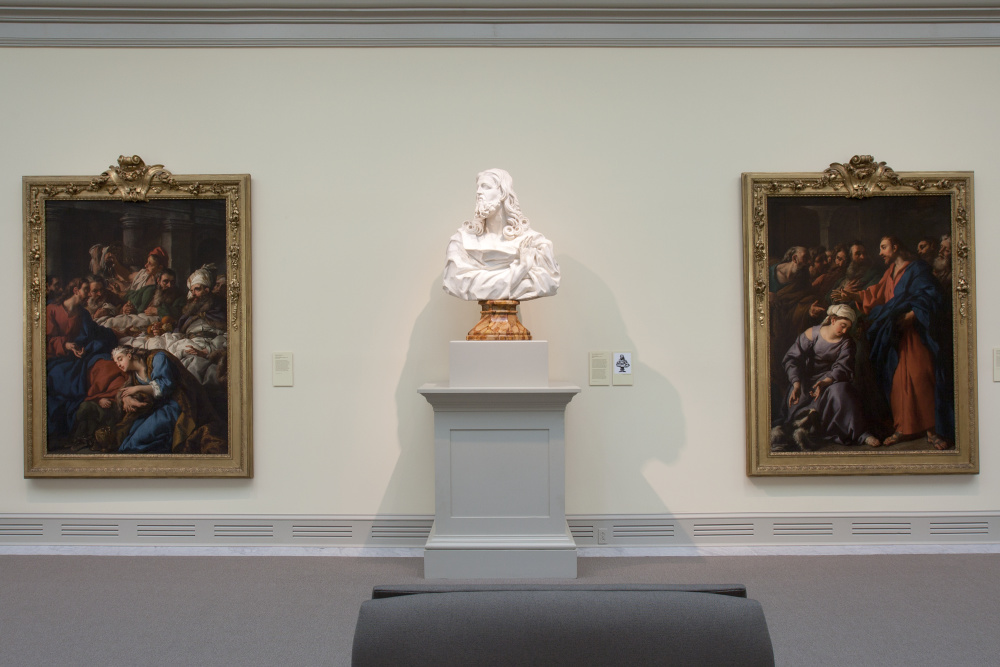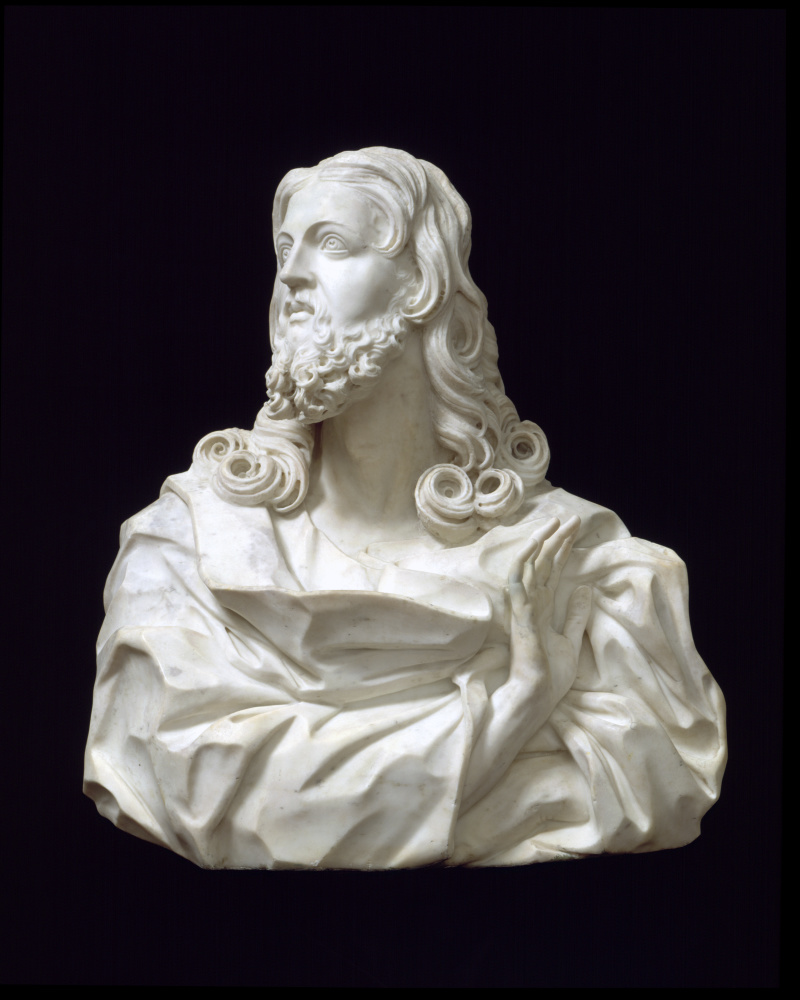- Open today, 10 am to 5 pm.
- Parking & Directions
- Free Admission
A Sculpture Fit for a Queen

European Art, Gallery 205. One of the new galleries created in the museum expansion, 2014.
The Chrysler is proud to hold an amazing sculpture that was first owned by a queen. In 1679, Gian Lorenzo Bernini created Bust of the Savior and sought to gift it to Queen Christina of Sweden. Overwhelmed by the gesture, she refused the gift. Not to be dissuaded, however, Bernini left it to her in his will. She treasured the bust, and it stayed in her bedroom until 1689 when Pope Innocent XI from the Odescalchi family in Rome received it upon Christina’s death. Today, the Queen’s prized possession is right at home in the Chrysler’s galleries— a gift to the Museum from Walter P. Chrysler, Jr.
Christina of Sweden (1626–1689) was one of the most remarkable and learned women of her period–or any period. Before her sixth birthday, she became the queen-elect of Sweden after her father King Gustav II Adolf was killed in the Battle of Lützen. As a young teen, she immersed herself in politics and was officially crowned at eighteen. By her late twenties, the queen of high intelligence and wit wanted something new. She renounced the throne, secretly became Roman Catholic, and moved to Rome, Italy—appointing her cousin to the throne just before her departure and leaving the people of Sweden in shock.
When she left Sweden, she befriended many popes and continued to pursue politics throughout Europe. She even aimed to gain the crowns of Naples and Poland, though her attempts were unsuccessful. While chasing her political dreams, she surrounded herself with arts and literature. She acquired a great collection of art, including masterpieces by Raphael, Titian, and Correggio; drawings by Michelangelo; and a silver coach and Bust of the Savior, both designed by Bernini.
Today, two busts of Christ survive that match the description of Christina’s treasured piece. It remains unclear which one belonged to Queen Christina and how much Bernini participated in the creation of each one, but an exhibition at Rome’s Borghese Gallery in the fall of 2017 uncovered several unique qualities in the Chrysler’s sculpture. To mark the twentieth anniversary of the Borghese’s reopening, the museum gathered Bernini works from institutions across the world and showcased them alongside Bernini works in the Borghese collection. Simply titled Bernini, the exhibition offered the rare opportunity to compare the Chrysler’s Bust of the Savior to the other version from San Sebastiano fuori le Mura, one of the oldest churches in Rome.
While nearly identical, the Chrysler’s bust is not finished, unlike the other bust. The many parallel rows of drilled holes in the curls would normally be carved into smooth lines that would then be polished to a gleaming, reflective white surface. Visible tool marks give the Chrysler’s sculpture a suggestive quality and show the artist’s hand at work. The beard and locks of hair in the Chrysler’s version have been drilled through, unlike those of its twin, giving the hair a marvelously dynamic open structure. Only a sculptor with supreme ability and confidence could attempt to sculpt brittle marble in this manner. Bernini was an architect and painter as well, but his dramatic and theatrical marble sculptures were his most innovative and daring achievements. He made the stone suggest movement and defy gravity, challenging the very nature of stone as heavy, solid, and brittle. The differences in the busts featured in the Borghese Gallery’s exhibition do not prove or disprove authorship, but rather tell a story about the process by which great works of art are made.

Christina of Sweden was known for her lavish support of the arts, and Gian Lorenzo Bernini admired her for that. He admired her so much that he carved Bust of the Savior for her when he was eighty years old. It’s amazing to consider Bernini creating a work of such meticulous craftsmanship just a year before his death. Perhaps the then-elderly Italian master was truly driven by his affection for the Queen.
-Lloyd DeWitt, PhD, Chief Curator and Irene Leache Curator of European Art


